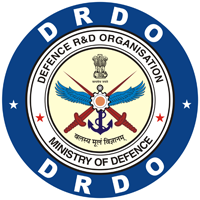Optimisation of Kinematics for Tracked Vehicle Hydro Gas Suspension System
DOI:
https://doi.org/10.14429/dsj.56.1938Keywords:
Optimisation, kinematics, hydro gas suspension, tracked vehicle, cross-country mobility, single slider crank mechanism, kinematic linkagesAbstract
The modern-day armoured fighting vehicles (AFVs) are basically tracked vehicles equippedwith hydro gas suspensions, in lieu of conventional mechanical suspensions like torsion bar
and coil spring bogie suspensions. The uniqueness of hydro gas suspension is that it offers
a nonlinear spring rate, which is very much required for the cross-country moveability of a
tracked vehicle. The AFVs have to negotiate different cross-country terrains like sandy, rocky,
riverbed, etc. and the road irregularities provide enumerable problems during dynamic loadings
to the design of hydro gas suspension system. Optimising various design parameters demands
innovative design methodologies to achieve better ride performance. Hence, a comprehensive
kinematic analysis is needed. In this study, a methodology has been derived to optimise the
kinematics of the suspension by reorienting the cylinder axis and optimising the loadtransferring
leverage factor so that the side thrust on the cylinder is minimised to a greater
extent. The optimisation ultimately increases the life of the high-pressure and high-temperature
piston seals, resulting in enhanced system life for better dependability.
Downloads
Published
2006-11-01
How to Cite
Sridhar, S., & Sekar, N. (2006). Optimisation of Kinematics for Tracked Vehicle Hydro Gas Suspension System. Defence Science Journal, 56(5), 753–768. https://doi.org/10.14429/dsj.56.1938
Issue
Section
Armaments & Explosives
License
 Where otherwise noted, the Articles on this site are licensed under Creative Commons License: CC Attribution-Noncommercial-No Derivative Works 2.5 India
Where otherwise noted, the Articles on this site are licensed under Creative Commons License: CC Attribution-Noncommercial-No Derivative Works 2.5 India

